Did you imagine freelance life as drinking a cocktail on a sandy beach to give yourself a final nudge for quitting a 9-to-5 job?
More freedom, independence, and free time — yay! No need for any specific plan or time management strategies — all will get sorted out somehow. If you have already tried, you should have noticed a few challenges.
Once you become a freelancer or entrepreneur, all of a sudden, you must:
-
Self-motivate
-
Meet deadlines unassisted
-
Do your own bookwork and invoicing
-
Deal with unhappy customers
-
Self manage your taxes
Those things don’t bother us much with a salaried job, at least not to such an extent.
And what’s worse — your tasks can no longer be dealt with within a 24-hour day. So how can you get more out of the time you have? Let's explore some time management strategies to help you save even ten hours weekly (or more).
What is time management?
Time management is how you manage your time to accomplish the objectives and it's also how you control and allocate your time to specific everyday tasks. The concept of time management focuses on increasing productivity and efficiency.
No one is born great at time management, but you can acquire this skill through practice. So let’s explore the ways to make time management your second nature.
10 Effective Time Management Strategies for Freelancers
1. Create Routines
If you ask any successful person about managing their time effectively, they will all say the same thing — make a routine.
Forming a work routine is the secret to freeing yourself from impending and compressing deadlines compounded by family, relationships, and social obligations. Easier said than done, right? So let’s see what specific steps you can take to establish routines that stick.
Step 1. Set up your working hours
Choose the time when you are the most productive. Your ideal hours depend on whether you are an owl or lark. For some people, working from 6 AM to 2 PM is the right time, for others — the day starts a few hours later.
When booking your working hours in a calendar, make sure you also notify your colleagues and clients, so they don't bother you when you are away. If you are using Google Chat, you can easily set the status to automatic, don't disturb, or away.
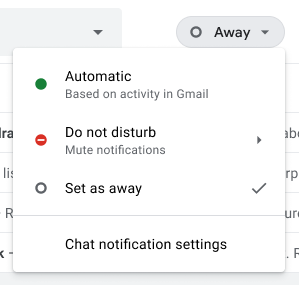
Step 2. Use invoice reminders
You’ve done the job, but your client doesn’t pay you on time? Chasing non-paying customers can take focus away from project work. Make it a habit to send invoices using invoicing software. For example, with InvoiceOcean, you can set up reminders that run automatically if a client is late with a payment. You can define the time span for reminders — set it once and they do the right job for you.
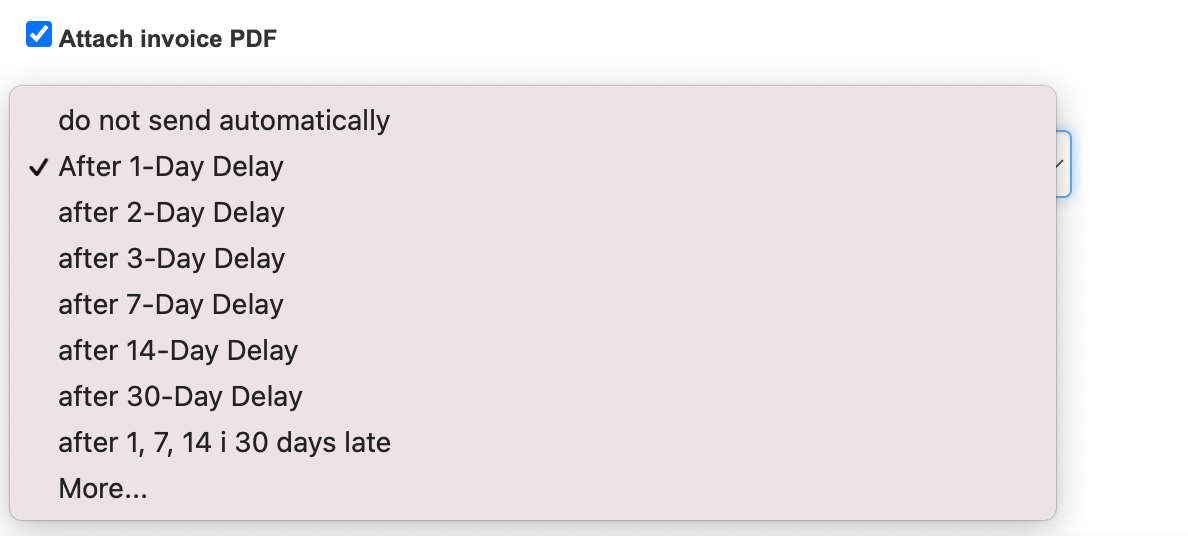
Step 3. Don’t check email too often
When you are a bit bored or stuck with the task, don’t deviate your thinking by checking your mailbox — just continue with some lighter task or go for a small break. Emails can make you feel more agitated and take focus away from more important tasks. Setting a specific time to go through your inbox is one of the steps to mastering time management as a pro.
Step 4. Follow the rule “Finished is better than perfect”
Don’t sit on one task for too long if it’s too complicated or when you lack motivation. Focus on the outcome. It’s better to get a rough draft of a project and then fix the imperfections instead of spending weeks and having nothing to present to a client. Remember that perfection won’t take you anywhere — just contribute to wasted time.
2. Learn to Prioritize
When things are mounting up and time is no longer on your side, it is essential to prioritize from the most important things to the least important.
This may seem like common sense; however, rational thinking tends to escape even the best of us when the pressure is on. Developing the skill of prioritization is a skill of success, and the more you do it, the better you get at it.
For example, when creating a task in a project management system, you can assign a label to it — High, Medium, or Low priority.

Once you can list your priorities in order, then start breaking those projects and tasks into bite-size pieces, and all of a sudden, things may not seem so daunting.
When making a list of priorities, a big "don't" is letting everything feel like a priority, which is a sure-fire way to board the train to analysis paralysis.
You must isolate, prioritize, and commit, and if things need to be readjusted, that's ok. Rigidity is a curse to the freelance worker, and learning to have a fluid attitude will go a long way when developing effective time-tracking methods.
4. Don't practice multitasking
The human brain needs some time to switch from one task to another and when you do a few tasks at the same time, your brain has to constantly refocus. It means you decrease your productivity and, eventually, spend more time doing the work. While it might seem you do less, focusing on just one task will actually get you to complete tasks faster and manage time much better.
When trying to do a single task at a time, use Pomodoro Technique. This technique focuses on applying 25-minute sessions and taking 5-minute breaks. With the Pomodoro timer, you break your work into shorter sessions and your brain gets time to rest.
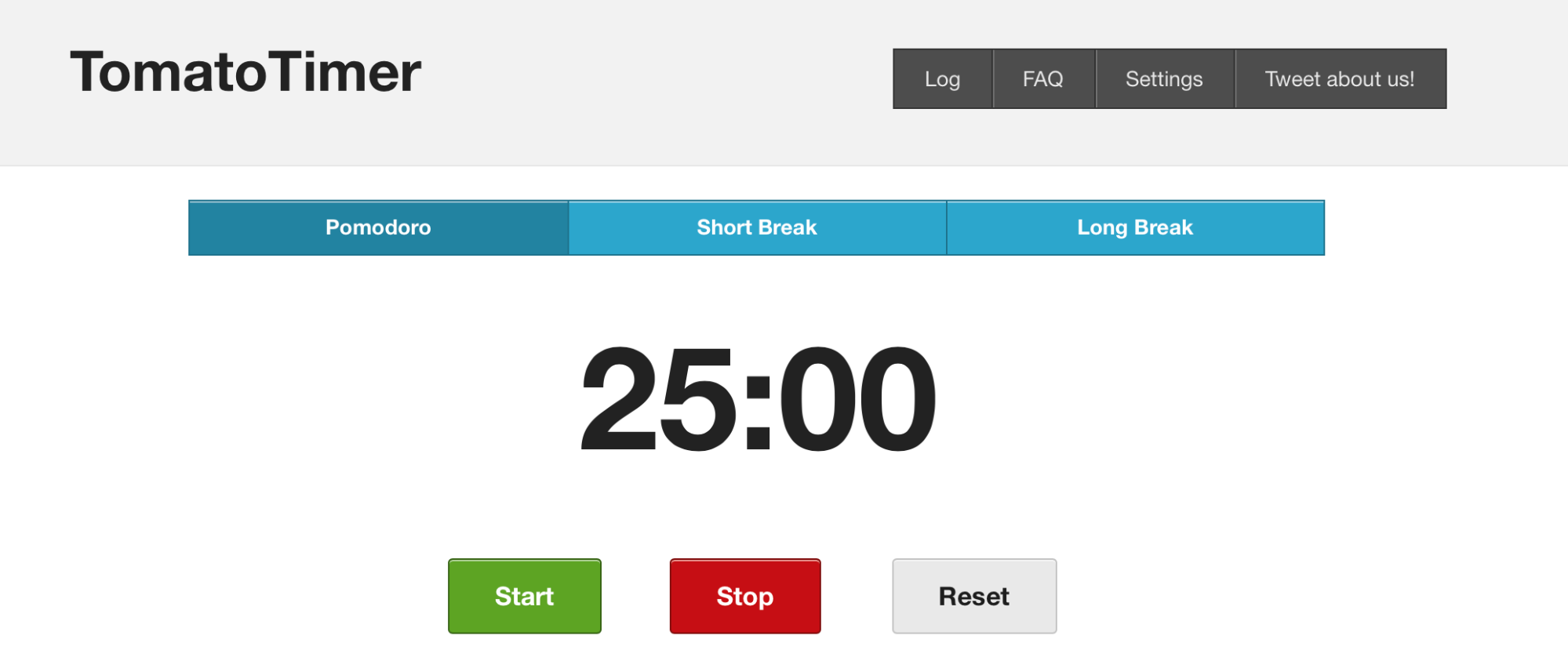
5. Set strict deadlines
Have you heard of Parkinson's law? According to this principle, we fill out the time available to complete a task with work.
Think about it — if you had 20 hours to complete a task, you'd probably submit a project right before a deadline. But here is the thing — you'd probably do the same if you had two times less time.
That's exactly what Parkinson's law stresses out and you can use its mechanism in your favor. How? Set up shorter deadlines in your online calendar for daily tasks.
6. Embrace essentialism
How often do you say "no" to new clients, projects, or tasks? If you are still tight on time, you don't do it as often as you should.
There are important tasks that bring you closer to your objectives, while some other tasks become a constant distraction and don't take you anywhere. Essentialism helps you focus on the former and eliminate the latter.
This principle is based on the view of saying "yes" only to high-priority activities. As human beings, we have our time limits and can't do an infinite number of tasks while maintaining focus.
Instead of involving in multiple projects, you choose only a couple that is the most important for you — based on the goals your want to achieve.
By adopting the principles of essentialism, you move away from the idea of doing more work. Instead, you eliminate half the work and focus all your effort on doing the right thing.
If it means saying "no" to 90% of projects or tasks that don't bring you any closer to accomplishing your goals, that's fine.
7. Apply timeboxing
Timeboxing is one of the time management techniques that help you eliminate distractions and focus on a single task during a limited period of time.
According to this time management technique, you reserve time slots in your calendar for specific tasks. That's exactly how you run and schedule meetings!
Once your timeboxing session starts, you have to stay focused and move away from distractions. Here is how you can organize tasks into time blocks.
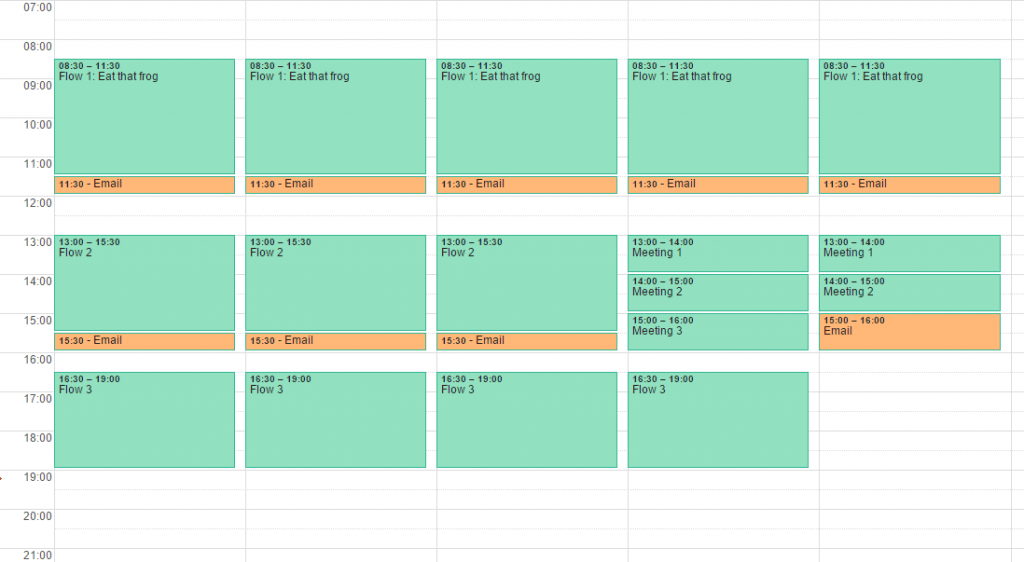
8. Automate tedious processes
No matter what kind of freelance work you do, there will be software that helps you reduce your paperwork, organize your workload, and take care of your accounting.
This not only frees up time for work productivity but also goes a long way in helping achieve work and life balance.
Here are some processes that you can easily automate:
-
Invoice management — Use a tool that not only automates the process of creating and sending invoices but also helps you get paid faster. For example, in InvoiceOcean, you can use automatic reminders on unpaid invoices and change invoice status (manually or automatically) once your invoice is paid.
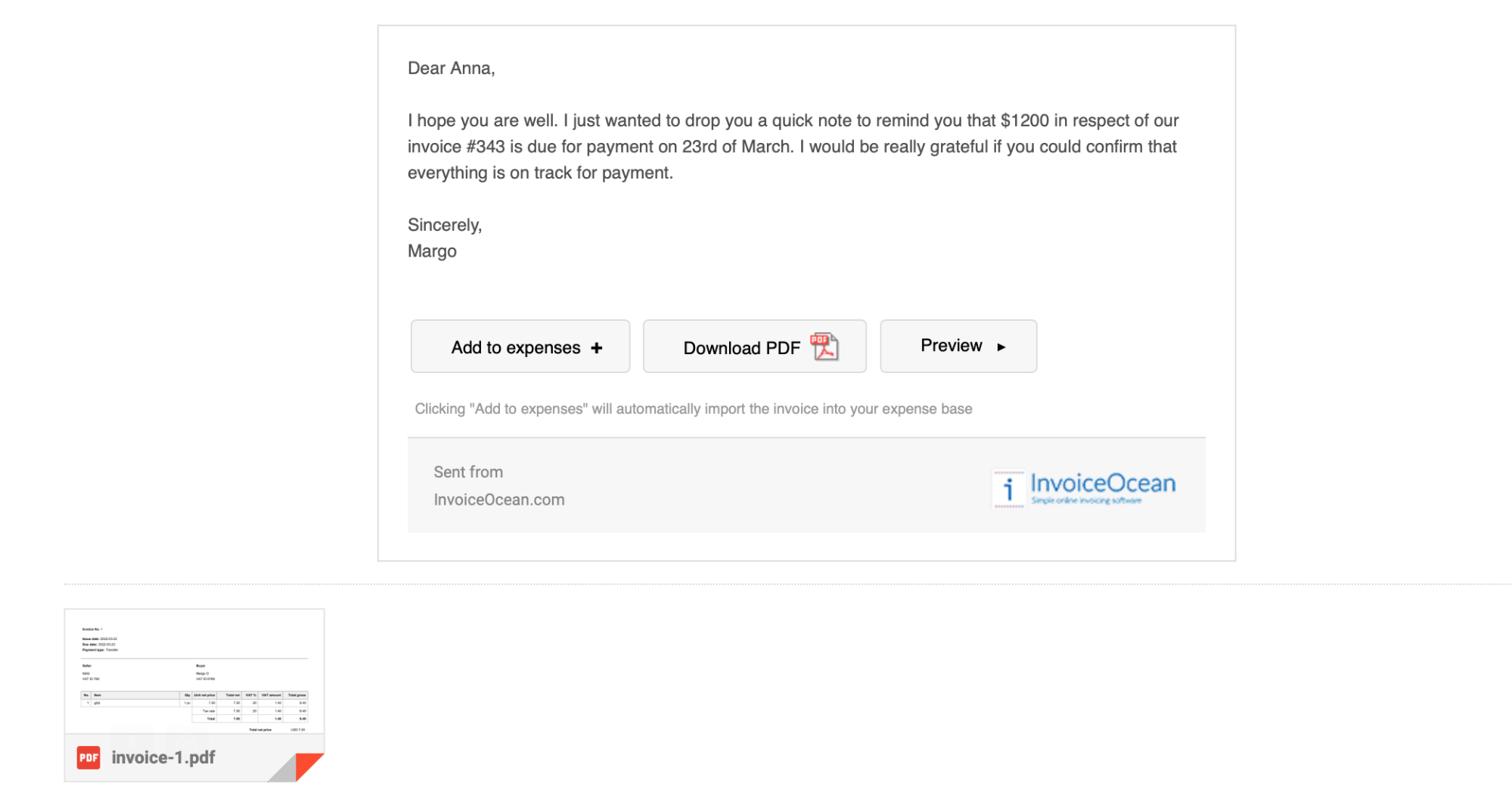
-
Marketing emails — With drag and drop email template builders, you can automate the process of creating emails you send to clients or prospects. More advanced email automation tools also offer an option of setting up triggers — so in the situation when your client is checking your services page, you can send a personalized email suggesting booking a free consultation.
-
Booking meetings — Setting up meetings with clients can take quite a lot of time. Sending reminders about upcoming meetings consumes even more energy. With a simple meeting scheduling tool, you can send a link to clients where they can view your calendar, book a meeting, and then, get reminders in the specified timeframe.
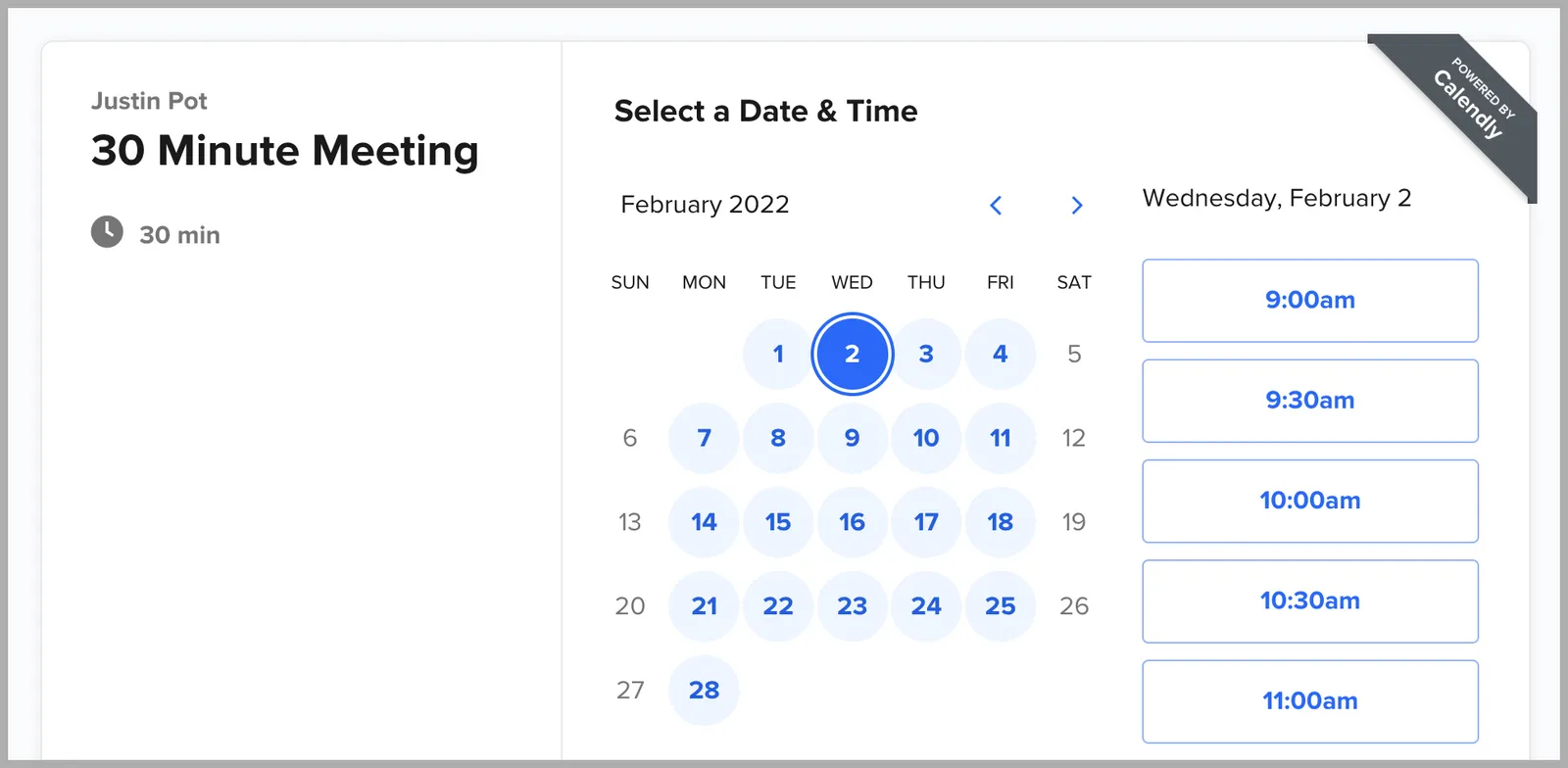
-
Convert currency — there are banks for freelancers that send money instantly anywhere in the world and do it at a low fee, but that's not the only freelancers need these days. If you have clients from around the world, you are probably always on the lookout for a low exchange rate — in most cases, you just waste time waiting. Instead of engaging in this time-consuming activity, use auto conversions. For example, Wise converts money for you once the desired exchange rate is reached. Here is how it works — you pick your desired rate, an amount for conversion, and currencies, and get your money converted automatically once your target rate is available.
9. Follow the rapid planning method
Have you ever done certain tasks and realized they are not taking you anywhere?
It's like asking your granny to take programming lessons, buy a course, and get her to attend it saying "It's the future!" — will she really see a point in all this?
When you don't see a reason and an outcome behind a certain activity, you won't see results in the end. With the rapid planning method, you focus first on the outcome of your daily tasks and then make a plan to execute — not the other way round.
With the rapid planning method, you ask yourself these three questions:
-
What do I really want?
-
Why it does matter?
-
How will I achieve it?
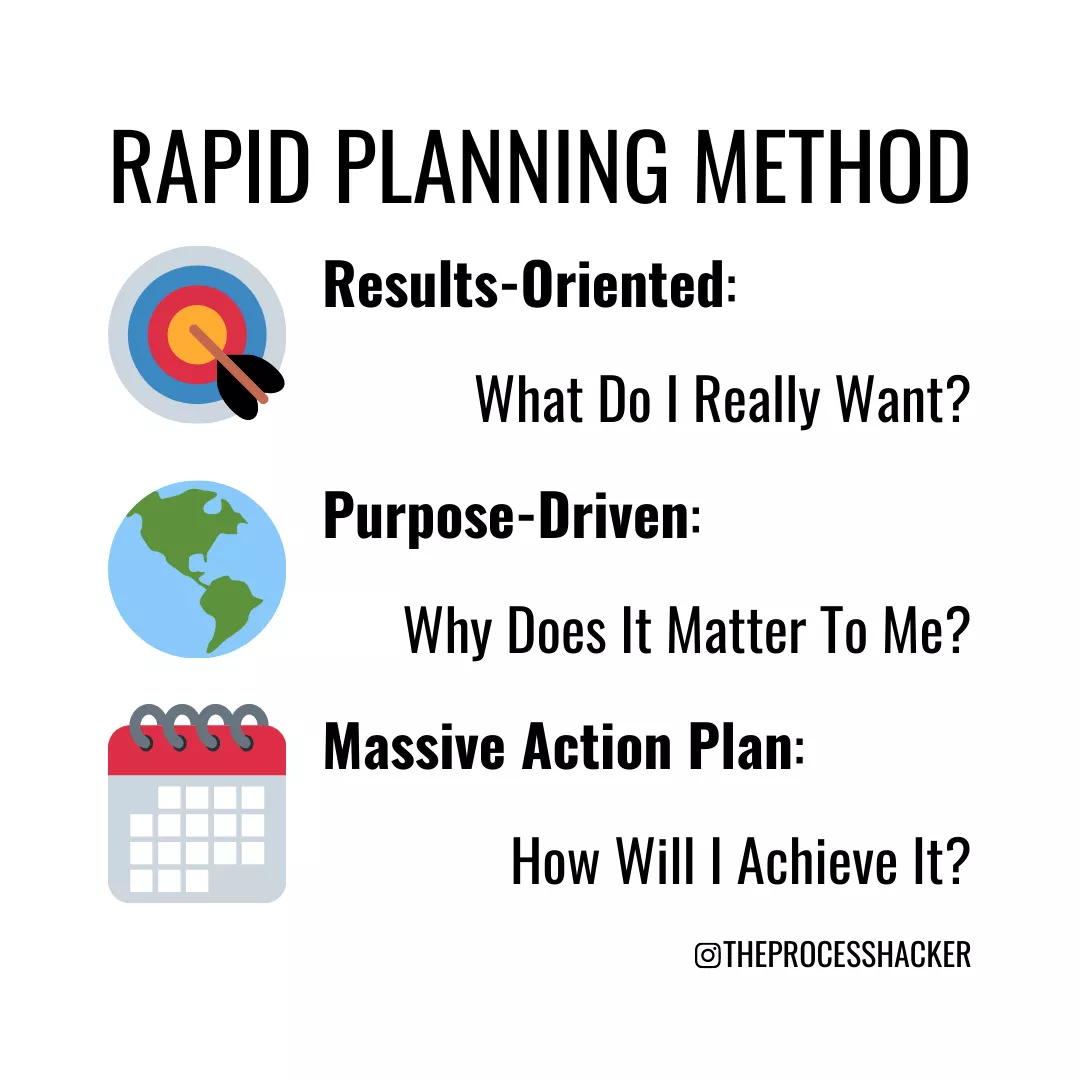
10. Run Your Life Like a Business
With all this talk of time-tracking, prioritization, and automation for business, it is easy to forget why you became a freelancer in the first place. For most people, the primary motivation was to live a better life.
Although you may look at a freelancer peer and think their business is a well-oiled machine, it could be that the rest of their life is a train wreck.
You only get 24-hours in a day, and after you close your laptop or put down the tools, you still need to eat, shower, wash, clean, and get some quality sleep. When you organize and automate your life like your business, you free up more time to live life on your terms.
Prioritizing your time for chores into blocks throughout the week, setting up automated bill payments, and planning your social life are all ways to take off the pressure, reduce stress and get more flow and space in your life.
If the systems you put in place stress you more, you may be doing it wrong, or it may not be the best system for your work and lifestyle.
Don't continue to do things that add pressure to your already hectic schedule. If the system you have in place is not working, try something else. Consider hiring a virtual project manager or a virtual assistant to take the load off and give you back some time.
Conclusion
It may feel like hard work to make these changes; new systems take time to implement and assimilate. However, after a few months of applying our time management tips, you may wonder how you ever coped without it. Even the most challenging tasks can go off your to-do list quickly if you focus on automating them, so you have more time to deal with urgent tasks.
It's time to make a to-do list of tasks that are time wasters. Start with invoice management — it's better to make sure that you are on track with cashflow first.
